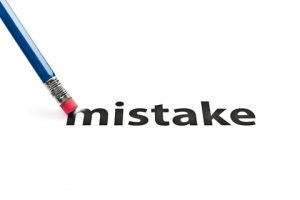

This is a nice hotel. Their nightly rates are expensive. It made me wonder… if there is this lack of attention to detail for what I expect is an important marketing tool, what else do they miss?
I went to check out their social media. It too had grammatical issues, typos and spelling errors. I went to review sites to see what others were saying about their experiences. And, there it was. So many reviews focused on how things that were promised didn’t happen and that the details that they expected to be standard were overlooked. There was a lack of attention to quality and excellence that was a concern to me. I booked somewhere else.
Content Is Key to Success
We create a lot of content for clients. Social media copy, web content, blog posts, editorial-style articles, white papers, presentations, speeches, op-eds, brochures, videos, podcasts, webinars, backgrounders, news releases, media statements… the list goes on and on. Content is king, queen and the court jester. It’s how organizations strategically inform, engage and persuade.
Brand storytelling is at the heart of how an organization tells its story. And if there are mistakes in it, you lose credibility. Factual inaccuracies, typos, grammatical errors and spelling mistakes hurt your brand reputation. Ensuring that your content not only has a great narrative that engages, but that it also meets strong quality standards in these areas should be a given.
The Language of Social Media
Some of our clients have an audience that requires them to embrace a new language paradigm of social media slang. This means abbreviations and using numbers within a word (l8 = late). It depends on the demographic you are addressing. It has to be relevant.
Copy Editing, Proofreading and a Grammar Expert
We’re in a time of change – and that includes language. Words and sentences that would have been unacceptable even ten years ago are now accepted. In fact, the Oxford Dictionary comes out with a list of new words that are being added to it on a regular basis.
Language evolves and will continue to do so. It’s important that we, as communicators, stay on top of that evolution. We need to stay current with the words we use, but that doesn’t mean we can get sloppy, lazy or thoughtless about creating content. In our line of work, we can’t have typos, grammatical errors, spelling mistakes or factual blunders.
What Kind of Impression Do You Make?
Let’s face it – for the most part, the first impression that a potential customer or client gets of you is online. Twitter, Facebook, Instagram, your website, a video, a webinar… What if this communications piece has mistakes in it? What does that say about the quality of your work? What does it say of your professionalism? It says that you don’t care enough to pay attention to the details.
What Can You Do?
We work with clients to make sure that they always represent themselves as intelligently and professionally as possible (because that is who they are). Quite often, even if a client has written a piece – they send it to us for a copy edit, fact check and proofread before it is made public.
This includes social media copy. The challenge is that sometimes it is easy to dismiss an error on Twitter or Facebook because you were working quickly and had to put it up. The fact is, as much as social media is personal and more casual than other content, it still represents your brand.
As an aside, you should have a content strategy that clearly defines your content, storylines, the narrative and what your overarching content objectives are. Don’t wing it, don’t post for the sake of posting, and if you are always randomly posting – that’s what your ROI will be.
Be thoughtful about your content. Be detailed. Be aware that it takes time and effort to create great content. Don’t toss its impact out the window by making mistakes in it.
The Last Laugh
We found a roundup of some of the worst typos ever – that made it out into the public. We thought you might enjoy them.


